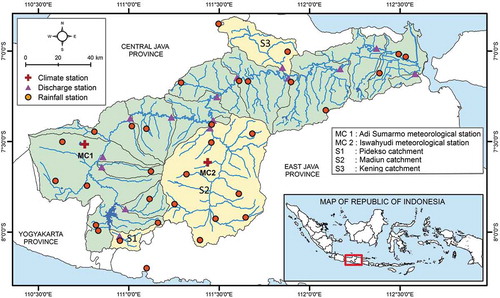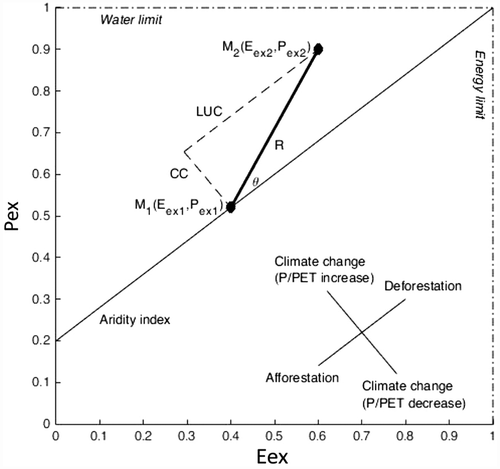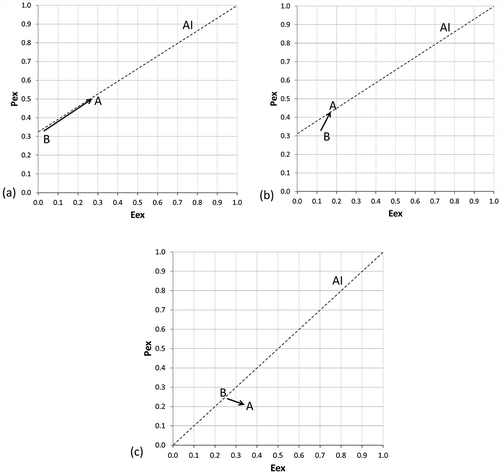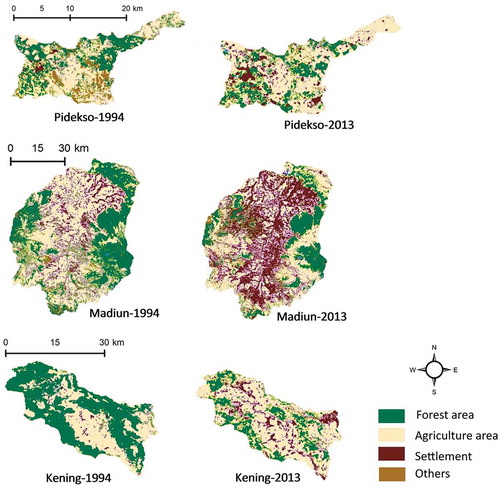Figures & data
Table 1. Catchment characteristics of the study area
Figure 1. Location of the Bengawan Solo catchment and the distribution of gauges. The catchments marked in yellow are part of the study area

Table 2. Hydrological characteristics of the study area
Figure 2. Tomer and Schilling’s (Citation2009) framework, adapted after Marhaento (Citation2018), illustrating how the fractions of excess water (Pex) and excess energy (Eex) respond to climate change and land use change. The points M1 and M2 are the fractions of excess water and energy forir the baseline period (Eex1, Pex1) and the altered period (Eex2,Pex2), respectively. The resultant length (R) is the magnitude of the combined influence of land use change and climate change

Table 3. Calculation of the contribution of land use change and climate change to streamflow alteration in the study catchments
Figure 3. Change of excess water (Pex) and excess energy (Eex) from the baseline period (B) to the altered period (A) relative to the aridity index (AI) for (a) the Pidekso catchment, (b) the Madiun catchment, and (c) the Kening catchment

Table 4. The results of the Mann-Kendall trend test and Sen’s slope estimator for annual rainfall and potential evapotranspiration in three catchments
Table 5. Land use distribution (in km2) in the three catchments for the years 1994 and 2013, and changes (in %)

